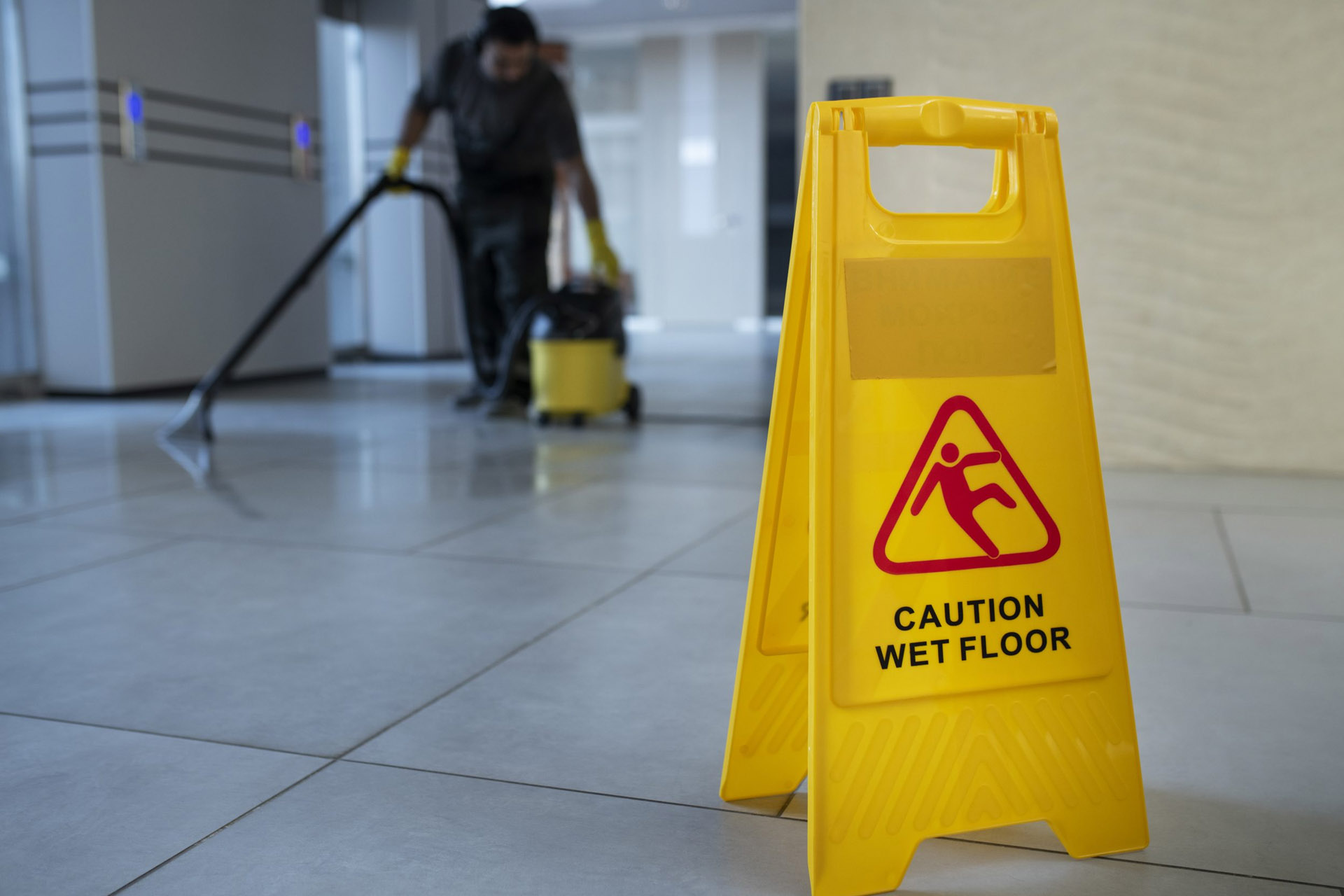Slip-and-fall settlements are typically calculated based on several factors, including the severity of injuries, medical expenses, lost wages, and other damages incurred by the victim.
New York is one of the most densely populated states in the U.S., especially in cities like New York City, where high foot traffic increases the likelihood of slip-and-fall accidents in public places, residential buildings, and workplaces. Additionally, the state's harsh winters with snow and ice significantly elevate the risk of such incidents.
Understanding the intricacies of settlement calculations helps ensure that victims receive adequate compensation to cover their damages and losses.
What is a slip and fall accident?
A slip and fall accident refers to an incident where an individual slips, trips, or falls due to hazardous conditions on someone else's property. These accidents can occur in various settings such as public places, workplaces, or private residences. Common causes include:
- Wet Floors: Spills, recently mopped floors, or weather-related wetness can make surfaces slippery.
- Uneven Surfaces: Cracks in sidewalks, uneven flooring, or poorly maintained stairs can cause individuals to trip and fall.
- Poor Lighting: Inadequate lighting can obscure hazards, making it difficult for individuals to see where they are walking.
- Obstacles and Clutter: Objects left in walkways or aisles without proper signage or barriers can lead to trips and falls.
In 2022, 865 workers tragically lost their lives due to falls, and hundreds of thousands sustained injuries severe enough to necessitate time off work. It's important to note that fatal injuries can occur even from falls on the same level; in fact, such incidents caused 144 fatalities in 2022, as reported by Injury Facts.
For help with your slip and fall claim, get in touch with our personal injury lawyer in Brooklyn today for a free consultation
Key factors in slip and fall settlement calculations
Calculating slip and fall settlements involves several factors that determine the compensation a victim may receive:
- Severity of injuries: More serious injuries like traumatic brain injuries or spinal cord damage lead to higher compensation due to extensive medical needs and potential long-term effects, whereas minor injuries result in smaller settlements.
- Medical expenses: Costs for surgeries, hospital stays, rehabilitation, medications, and assistive devices are factored in to ensure adequate compensation for the victim's healthcare needs.
- Lost wages and income: Compensation covers earnings lost during recovery and accounts for potential future income reductions or inability to work due to injuries sustained in the accident.
- Pain and suffering: Pain and suffering damages are assessed based on the physical and emotional impact of the injuries. This includes compensation for pain, emotional distress, loss of enjoyment of life, and other non-economic effects caused by the slip and fall incident.
- Long-term impacts: Settlements account for long-term impacts such as ongoing medical care, disability accommodations, and lifestyle adjustments necessary for the victim's recovery and quality of life post-accident.
- Property owner’s insurance policy: The limits of coverage in the policy impact the compensation a victim might receive, as they set the upper boundary for payouts and influence the extent to which medical expenses, lost wages, and other damages are reimbursed if the property owner is found liable.
- Documentation and evidence: Comprehensive evidence provides tangible proof of the incident, injuries, and the hazardous conditions that caused the accident. Detailed medical records, photographs of the accident scene, witness statements, and incident reports help establish liability and the extent of damages.
- Legal representation: Experienced legal representation is essential for navigating slip-and-fall settlements. Skilled attorneys advocate for fair compensation by leveraging their knowledge of personal injury law, negotiating with insurance adjusters, and presenting compelling evidence to support the victim's case.
Additional reading: average slip and fall settlement amounts
Legal principles for slip and fall cases in NY
In New York, successfully navigating slip and fall cases requires a thorough understanding of the specific legal principles that govern liability and compensation. These principles determine who is responsible for an accident and how much compensation a victim can receive.
Premises liability
New York holds property owners and occupiers accountable for maintaining safe conditions on their premises. Owners have a duty to regularly inspect and repair hazards that could foreseeably cause harm to visitors or guests. This includes addressing issues like slippery floors, uneven surfaces, inadequate lighting, and failure to warn of known dangers.
Failure to uphold these responsibilities can result in liability if someone is injured. For instance, if a store owner neglects to clean up a spill promptly and a customer slips and falls, the owner may be held liable for the resulting injuries.
Comparative negligence
This legal doctrine allows for the apportionment of fault between the parties involved based on their degree of negligence contributing to the accident. Under comparative negligence, the compensation awarded to the injured party is reduced in proportion to their percentage of fault. For example, if a court determines that a victim was 20% at fault for not paying attention to warning signs, their compensation would be reduced by 20%.
However, if the injured party is found to be 100% at fault, they are barred from recovering any damages.

The process of calculating slip and fall settlements
Determining fair compensation in a slip-and-fall settlement requires following a systematic approach. Here’s a detailed breakdown of the process:
1. Initial Consultation and Case Evaluation
The process begins with an initial consultation with a personal injury attorney who specializes in slip and fall cases. During this meeting, the attorney assesses the circumstances of the accident, reviews medical records, and evaluates the potential merits of the case.
Factors such as the severity of injuries, liability of the property owner, and potential damages (medical expenses, lost wages, pain and suffering) are considered during this evaluation.
Contact our personal injury lawyer in Queens for a free initial consultation today and get the compensation you deserve.
2. Gathering Evidence
The next step involves collecting all relevant evidence to support the claim. This includes obtaining incident reports, witness statements, photographs of the accident scene, and medical documentation detailing injuries and treatment.
Expert opinions may be sought to establish liability, especially in cases involving complex factors like building codes or safety regulations.
3. Negotiating with Insurance Companies
Once evidence is gathered, the attorney initiates negotiations with the insurance company representing the property owner. Negotiations aim to secure a fair settlement that compensates the victim for their injuries and losses.
The attorney presents the evidence of liability and damages to support the demand for compensation. Insurance adjusters may counter with lower offers, prompting further negotiation.
4. Sending a Settlement Demand Letter
A formal settlement demand letter outlines the victim’s case, including a detailed description of the accident, injuries sustained, medical treatments, and financial losses incurred.
The letter specifies the amount of compensation sought based on the damages calculated, supported by evidence and legal arguments.
5. Mediation or Arbitration
If initial negotiations do not result in an acceptable settlement, alternative dispute resolution methods like mediation or arbitration may be pursued.
Mediation involves a neutral third-party mediator facilitating negotiations between the parties to reach a mutually agreeable settlement.
Arbitration involves presenting the case to an arbitrator who makes a binding decision on the settlement amount based on the evidence presented.
6. Settlement Agreement
If negotiations or alternative dispute resolution are successful, a settlement agreement is drafted outlining the terms and amount of compensation.
The agreement is signed by both parties, and the payout is disbursed to the victim after deducting legal fees and expenses.
7. Litigation
In cases where settlement negotiations fail to yield a satisfactory outcome, the attorney may recommend filing a lawsuit and pursuing litigation.
Litigation involves presenting the case in court, where a judge or jury decides liability and awards damages based on the evidence presented by both parties.
What can decrease your settlement amount?
Various factors can indeed lead to a reduction in your settlement amount:
- Delayed Medical Treatment: Delaying medical treatment after a slip and fall can weaken the claim. Insurance companies may argue that the injuries were not severe or were exacerbated due to the delay, leading to reduced compensation.
- Lack of Evidence: Without strong evidence linking the accident to the property owner's negligence, insurers may dispute liability or offer lower settlements.
- Partial Fault (Comparative Negligence): New York follows comparative negligence, where the victim's own negligence in contributing to the accident can reduce the payout proportionally. If the victim is found partially at fault (e.g., not paying attention to warning signs), their compensation will be decreased accordingly.
- Insurance Company Tactics: Insurers often employ tactics to minimize payouts, such as offering low initial settlement offers, disputing the extent of injuries, or delaying negotiations. These strategies aim to pressure victims into accepting less than what they may deserve.
Additional reading: what to do after a slip and fall accident
How a lawyer can help maximize your settlement
Hiring a lawyer specializing in slip and fall cases can significantly enhance the chances of maximizing the settlement amount:
- Expert Negotiation Skills: They can effectively negotiate with insurance adjusters to secure a fair and reasonable settlement that reflects the full extent of the victim's damages.
- Thorough Case Preparation: Lawyers conduct thorough investigations and gather compelling evidence to strengthen the case. This includes obtaining medical records, witness statements, expert opinions, and documentation of the accident scene to establish liability and quantify damages.
- Challenging Low Settlement Offers: Lawyers are adept at assessing the true value of the case based on the severity of injuries, medical expenses, lost wages, and pain and suffering. They can challenge inadequate settlement offers and advocate for higher compensation that adequately covers the victim's current and future needs.
- Navigating Legal Complexity: Slip and fall cases involve intricate legal principles and procedural rules. Lawyers have the expertise to navigate these complexities, ensuring that all legal requirements are met and deadlines are adhered to throughout the settlement process.
- Litigation Expertise: If negotiations fail to yield a fair settlement, lawyers are prepared to escalate the case to litigation. They can represent the victim in court, presenting a compelling case to a judge or jury and advocating vigorously for maximum compensation.
Securing your slip and fall settlement: Call us today!
We understand how overwhelming and stressful a slip-and-fall accident can be, especially in a bustling place like New York. Prompt medical attention, thorough evidence gathering, and expert legal representation can significantly impact your settlement outcome. By taking these steps, you can strengthen your case and improve your chances of a fair settlement.
Don't navigate this process alone. Your path to fair compensation begins with a simple call.
Contact us today at Ajlouny Injury Law to schedule a free consultation with a specialized injury lawyer.
Share This Story
Interested in this topic? Your friends might be too! Consider sharing this story to your social media channels and look like a smart, sophisticated resource of information.
What is Your Case Worth?
Call Now and Find Out For Free!
Unhappy with your lawyer? Get a free second opinion!




